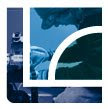We analysed a student thriller to see what expectations we need to consider when producing our thriller. This is what i analysed:
Camerawork: There is many repeated shots to create effect of repetition, to show the spectator that the certain shot is relevent. The shot is being emphasised to keep the spectator wondering about what is happening. The producers of this want the spectator to make relations to a certaing shot. There are close ups of peoples legs and feet to emphasis that the spectator can not see the charactors face, this also keeps the spectator wondering about who the people are in the sequence and what they are doing, it is very important to keep the spectator guessing, and unaware of what is happening. The producers do not want to give away everything before the film has started which is why this is effective. There is a close up of someones eyes, to show their emotion, to keep the spectator aware of the mood of the sequence, this is an important thing to do, so the spectator is interested and is set up for the rest of the film. the opening sequence has to set the mood for the film, and this sequence does. The shots are very dark which may sugest uncertainty whihc could be effective in many ways. The handheld camera creates the effect of movement, it keeps the spectator on the edge of the seat. The producers of this sequence has done exactly that by keeps the spectator involved and interested in what is going to happen.
Editing: There are fades and transitions used to keep the film continual, to create the effect of continuous editing. The transitions are a perfect chance to put in the titles, which in this sequence are good. In one shot of people walking, the pace is slowed down and the shot is in slow motion, this automatically makes the spectator think about the pace to come in the film, the pace is slowed down and speeded up al the way through this sequence, this can be good as it keeps the spectator interested. Some shots have been edited to be black and white, this could create the effect of darkness and uncertainty. It may give the spectator a feel of a colourless picture, which could also set the mood as the mood given out is dim.
Sound: At the beginning of the sequence the sound is really fast paced, this is an instant set for a pace but then throughtout the sequence the pace is slowed down and speeded up. This is done by a variety of shots included slow motion and change in music, in some parts of the sequence the shots are slow paced and the music is slow paced, but in other parts the music is fast and the shots are fast. This shows that the producers have really thought about what mood they want to set and done this in an effective way.
Mise-en-scene: The titles over the picture creates the effect of making the spectator read both the titles and get what is happening in the sequence, this is effective as it helps the spectator link the shots together. The titles are also shown over blank screens which could also be effective as it isolates them to help the spectator concentrate on the titles without linking them to the picture. The sequence has an over all good plot, which is presneted nicely with the shot durations etc. The cliffhanger at the end is really effective as it keeps the spectator wanting more, which is what a title sequence is supposed to do, it makes the spectator want to watch the whole film and put the pieces together. The clothing and settings are kept to a minimal, which suggests that they wanted the spectator to guess the locations, the shots were mostly close ups so you didnt see much of the locations anyway, this could be effective as the spectator is left on the edge of their seat wanting to watch more.
Overall, this sequence has been an influence, as we have an idea of how to produce our title sequence, it helps us to understand properly the point of a title sequence and what effect it can have on the spectator. We will takes points from this sequence and use them to construct our own title sequence. It has been a big influence on us.

No comments:
Post a Comment